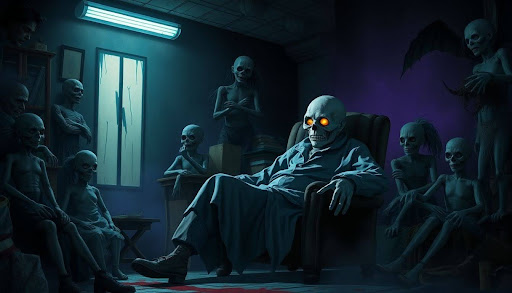A Thoughtful Review of The Fault in Our Stars by John Green
In “The Fault in Our Stars,” John Green tells a poignant story that captures the bittersweet moments of love and loss faced by young people with terminal illnesses. The novel centers on Hazel Grace Lancaster, a 16-year-old girl battling cancer, and Augustus Waters, a charming boy in remission. Their journey reveals not just their struggles with illness but also their search for meaning and connection amidst the looming shadows of mortality.
Through sharp dialogue and heartfelt encounters, Green explores themes that resonate deeply with readers of all ages. The narrative doesn’t shy away from the harsh realities of life and death, yet it balances these with humor and hope. You’ll find yourself reflected in Hazel and Augustus’s wit, sorrow, and their desire to make a lasting impact, even when time is short.
Whether you’re an avid reader or just beginning to explore literature, this book offers an invitation to reflect on the value of relationships and the fragility of existence. Join us as we review the layers of this beloved novel and its compelling message about the human experience.
Overview of The Fault in Our Stars
“The Fault in Our Stars” offers an emotional narrative that blends love, tragedy, and the intense struggles of youth battling cancer. The story revolves around two main characters, Hazel Grace Lancaster and Augustus Waters, whose paths intertwine in the most profound way. Exploring their backgrounds and the evolution of their relationship, this section captures the essence of their journey and the significant events that shape their experiences.
Main Characters
Hazel Grace Lancaster is a 16-year-old girl diagnosed with thyroid cancer that has metastasized to her lungs. Living with a chronic illness has made Hazel wise beyond her years. She carries the weight of her condition but maintains a poignant sense of humor. Navigating daily life while grappling with existential questions, she resonates with anyone who has experienced illness or loss. For a deeper dive into Hazel’s character, you can check out the article on The Fault in Our Stars Character Analysis.
Augustus Waters, often referred to as Gus, is a charming boy in remission from osteosarcoma. His charismatic personality and philosophical outlook on life provide a stark contrast to Hazel’s more subdued demeanor. Augustus is determined to live fully, even with the shadow of illness looming over him. As their paths cross at a cancer support group, their individual struggles become a source of connection that leads to a transformative friendship. For more insights into Augustus, visit the Character List on SparkNotes.
Their relationship evolves from a simple shared interest in a support group to a deep emotional bond characterized by witty conversations, vulnerability, and ultimately, the willingness to confront the harsh realities of life and death together.
Plot Synopsis
At the heart of “The Fault in Our Stars” is the journey of Hazel and Augustus as they seek meaning in their lives amidst the backdrop of their illness. The story begins with Hazel reluctantly attending a support group, where she meets Gus. Their initial connection sparks curiosity and intrigue, leading them to explore each other’s thoughts on life, love, and mortality.
As their relationship blooms, they navigate various significant events, including their shared love for a novel that leaves them both yearning for answers. A pivotal trip to Amsterdam sets the stage for changes in their lives, revealing not just the beauty of their connection but also the heartache that comes with it. The narrative is rich with moments that capture the joy and sorrow of love, forcing readers to confront the complexities of relationships when faced with terminal illness. For a full summary, refer to this detailed overview.
Through these characters’ experiences, readers are reminded of the importance of love, friendship, and the impact each person can have on one another—even in the briefest encounters.
Themes and Motifs
“The Fault in Our Stars” is driven by rich themes that highlight the complexities of love, mortality, and the role humor plays in coping. John Green masterfully weaves these elements into the narrative, making it not only poignant but also relatable for everyone.
Love and Relationships
The portrayal of love between Hazel and Augustus transcends typical teenage romance. Their relationship blooms in a cancer support group, setting the stage for a connection forged in the face of adversity. Love in this narrative isn’t just romantic; it also represents camaraderie and mutual understanding.
As Hazel and Gus navigate their health challenges, they discover the depth of their feelings for each other. Their love is complex; it’s filled with urgency and a bittersweet awareness of their fleeting time together. They face the harsh reality that their illnesses could cut their relationship short. This generates a unique blend of joy and sorrow, causing readers to reflect on the essence of love itself. It’s about not just what you gain but what you are willing to give, even when time is limited. For a closer look at this theme, check out A Look at Love & Suffering in ‘The Fault in Our Stars’.
Mortality and Legacy
Mortality looms over Hazel and Augustus as they confront the inevitability of death. The characters’ dialogues often circle around their thoughts on life, legacy, and the meaning behind their existence. Hazel grapples with the notion of living a life that matters, often questioning what she can leave behind.
Augustus’s perspective on mortality adds another layer. He desires to be remembered and to leave a mark on the world despite his illness. Their discussions about legacy challenge readers to consider what we value in life and what impact we want to have. This poignant exploration of mortality reminds us that acknowledging death can enhance our appreciation for life. Discover more on how this theme develops through the narrative by visiting The Fault in Our Stars Themes.
The Role of Humor
In a narrative that heavily addresses complex and grim themes, humor emerges as a vital coping mechanism for the characters. Hazel’s sharp wit and Gus’s playful banter bring levity to their circumstances, allowing them to navigate their struggles with a degree of lightness.
Green skillfully incorporates humor throughout the novel, often through quick dialogues and unexpected moments of laughter. This use of humor highlights resilience; it shows how even in the darkest times, laughter can provide solace and strength. It invites readers to share in these moments of joy, suggesting that humor can coexist with sorrow. For great examples of this, consider reading about the dark humor of ‘The Fault in Our Stars’.
In summary, the themes and motifs found in “The Fault in Our Stars” resonate deeply, reflecting challenges that many face. The portrayal of love and relationships, along with the reflections on mortality and the use of humor, creates a rich narrative that is both touching and relatable.
Character Development
In “The Fault in Our Stars,” character development is crucial for understanding the emotional landscape that John Green creates. Through the experiences of Hazel Grace Lancaster and Augustus Waters, readers witness profound transformations driven by love, loss, and the quest for meaning. The narrative encourages us to consider how the people we connect with can influence our perspectives and ultimately reshape our lives.
Hazel’s Journey: Analyze Hazel’s transformation from a reserved girl to someone more open to love and life.
Hazel Grace Lancaster starts her journey as someone who feels like a burden due to her illness. Initially reserved and reluctant to engage deeply with others, she carries a heavy emotional weight. Cancer has forced her to confront her mortality at an age when she should be navigating the typical challenges of adolescence.
As the story progresses, Hazel’s transformation becomes evident. Meeting Augustus Waters at a cancer support group sparks a shift in her attitude. Augustus brings a sense of adventure and hope into her life, challenging her to step outside her comfort zone. Their conversations are laced with humor and vulnerability, creating a foundation for growth.
One significant moment is their trip to Amsterdam. This experience awakens Hazel’s sense of wonder and allows her to explore her feelings more openly. She begins to realize that embracing life, despite its challenges, is essential. Instead of merely existing, she learns to appreciate the beauty of living, however fleeting it may be. As Hazel navigates her relationship with Augustus, her willingness to be vulnerable and confront her fears becomes a hallmark of her growth. This change emphasizes the importance of human connections in learning to love and live fully. For additional insights into Hazel’s character development, refer to the analysis provided by LitCharts.
Augustus’s Influence: Reflect on how Augustus impacts Hazel’s perspective on life and her own struggles.
Augustus Waters plays a pivotal role in shaping Hazel’s experience and outlook on life. His character represents a blend of charm, charisma, and an unyielding desire to live life on his terms. At the very start, Gus is portrayed as a confident young man, unafraid of the reality of cancer. His outlook contrasts sharply with Hazel’s guarded nature, provoking her to challenge her complacent views.
Augustus’s influence extends beyond mere companionship. He embodies hope and the idea of making a mark on the world—even when faced with death. Through his willingness to confront his own mortality with a sense of humor and bravery, he encourages Hazel to reassess her approach to life. Their shared moments, filled with deep conversations and laughter, foster an environment where Hazel can open up.
For instance, their discussions about living well and leaving behind a legacy motivate Hazel to reconsider how she views her existence. Augustus inspires her to take risks and cherish emotional connections. His tragic end forces Hazel to confront the fragility of life and the pain of loss, further solidifying her evolution from a reserved girl to someone ready to embrace love, excitement, and even heartbreak.
As Augustus’s impact on Hazel deepens, readers understand their relationship not just as a source of love but also as a catalyst for introspection and growth. This dynamic showcases how relationships can profoundly alter our perception of ourselves and the world around us. For a deeper look into their relationship, check out insights from Bartleby.
Impact and Reception
“The Fault in Our Stars” by John Green has garnered significant attention and praise since its release. The book not only touches hearts but also engages in crucial conversations about love, loss, and the impact of illness on young lives. Let’s explore the critical acclaim it has received and the cultural impact that has solidified its place in contemporary literature.
Critical Acclaim
Numerous publications have lauded “The Fault in Our Stars” for its emotional depth and relatable characters. Critics have particularly highlighted the following strengths:
- Authenticity of Emotion: The story is often praised for its genuine portrayal of teenage experience and illness. The heartfelt dialogue and complicated emotions resonate with readers, making them feel deeply connected to the characters.
- Humor Amidst Tragedy: Reviewers have noted Green’s skillful weaving of humor into a narrative about serious topics. This blend allows moments of levity without undermining the gravity of the subject matter. One review from The Guardian describes the book as “beautiful,” emphasizing how it shows that a short life can still carry profound meaning.
- Compelling Character Development: Critics appreciate how the characters evolve throughout the narrative, offering readers a chance to engage with Hazel and Augustus’s journey deeply. Various reviews cite their relationship as a pivotal element that drives the story forward. One response from The Voyager critiques the narrative for focusing on their love rather than purely on the illness, showcasing how opinions can vary among audiences.
Cultural Impact
Since its publication, “The Fault in Our Stars” has had a profound influence on readers and the broader cultural landscape.
- Rise of “Sick Teen” Genre: The book has contributed to the rise of a genre featuring young protagonists dealing with severe illnesses, paving the way for works that blend romance with themes of mortality. This trend has sparked conversations around young adult literature and its portrayal of serious issues. An article from Vulture discusses how the book changed pop culture, emphasizing its role in establishing a new wave in young adult fiction.
- Inspiration for Dialogue on Illness: The narrative stimulates important discussions about illness and how it affects young people’s lives. Readers often share personal stories in response to Hazel and Augustus’s struggles, creating a communal sense of understanding and support. An insightful piece from Busted Halo highlights how the characters’ acceptance of death and selflessness prompt essential conversations about life’s fragility.
- Wider Recognition Through Adaptation: The book’s transition to film has further cemented its impact, attracting an even broader audience. The adaptation has sparked interest in the original text, encouraging those who may not typically read fiction to engage with Green’s poignant narrative. An article from The Independent details how the novel’s success led to its status as a bestseller and a significant cultural phenomenon.
By skillfully combining emotional storytelling with humor and a focus on serious themes, “The Fault in Our Stars” has left an indelible mark on both literature and the cultural conversation surrounding illness and youth.
Conclusion
As we reflect on “The Fault in Our Stars” by John Green, it’s clear that this novel offers much more than a typical love story. It’s a powerful exploration of life, death, and the connections we forge in our time here. The genuine emotions depicted through Hazel and Augustus’s journey remind us of the complexities surrounding love and loss.
Key Insights
- Authentic Emotions: The characters’ struggles with their illnesses are portrayed with emotional sincerity, making their experiences feel relatable. Readers will find themselves resonating with the characters’ desires, fears, and aspirations. The adept use of humor amidst heartbreaking situations serves to soften the narrative’s weight, creating balance and depth.
- Character Growth: Hazel’s evolution from a reserved individual to someone willing to embrace love and life is inspiring. Augustus’s influence is pivotal, pushing her to reconsider her perspective on existence. Their relationship is not merely a backdrop but a catalyst for profound change, demonstrating how love can profoundly impact our outlook.
- Cultural Impact: This novel has shaped conversations about illness and young adult experiences, paving the way for many similar stories. Its success speaks to the universal themes present and engenders a sense of community among readers who share stories about their personal interactions with the issues raised.
Final Recommendation
If you haven’t yet read “The Fault in Our Stars,” consider picking it up. It’s an emotional rollercoaster that will make you think about life in a new light. The story’s blend of humor, tragedy, and romance makes it engaging for any reader, regardless of age. You’ll likely find elements that resonate deeply with your own experiences.
For further insights and analysis, you can explore these links: The Fault in Our Stars Book Review – The Journalist, The Fault in Our Stars Study Guide – LitCharts.







